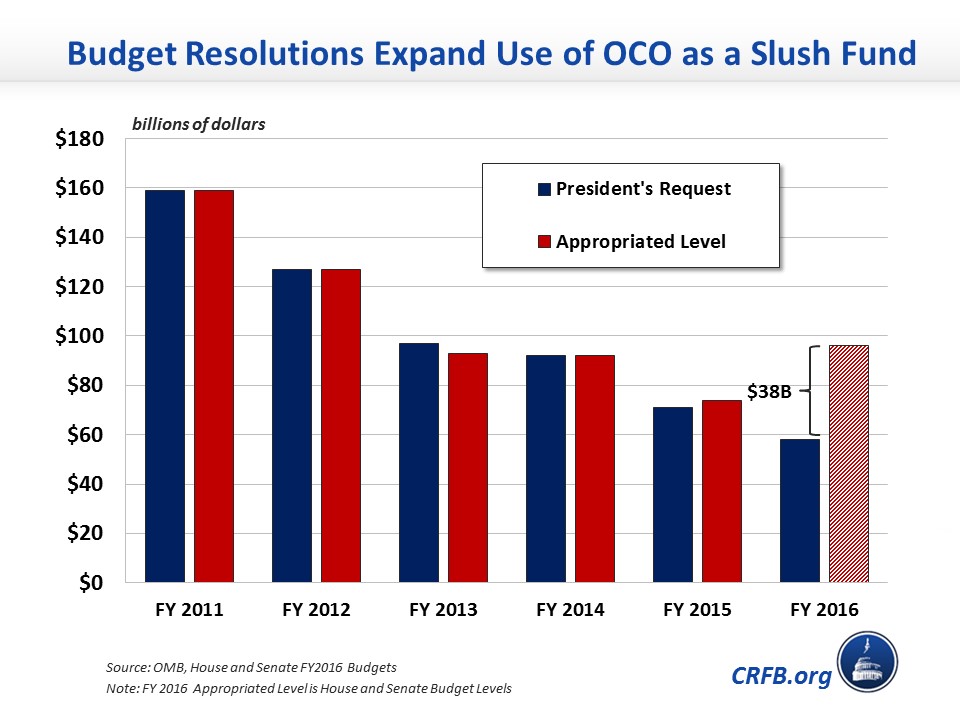Appropriators Jump the Gun and Start the FY 2016 Funding Race
The House Appropriations Committee kicked off appropriations season this week by starting to mark up their Fiscal Year 2016 bills at the same time that the House of Representatives approved its allocations to the individual appropriations subcommittees. Technically, the House is jumping the gun by marking up appropriations bills before the Budget Committees complete their conference agreement that will set topline spending limits.
The House Appropriations committee has approved both the Energy and Water bill (E&W) and the Military Construction and Veterans Affairs bill (MilCon/VA) on voice votes. Those bills will now head to the House floor for full consideration.
The E&W bill provides $35.4 billion in discretionary funding, which is $1.2 billion above the FY 2015 level but about $0.6 billion below the President’s request. This is not surprising since the President's budget proposes a higher overall non-defense spending limit for FY 2016 than that prescribed by the sequester.
The MilCon/VA bill provides $76.6 billion in discretionary budget authority ($4.6 billion above FY 2015 and $1.2 billion below the President's request), of which $532 million is from Overseas Contingency Operations (OCO) funding. OCO funding is not subject to the Budget Control Act limits on discretionary spending, and we have written extensively in the past month about our concerns that both the House and Senate budgets allow a very high OCO budget of $96 billion without offsetting the increased cost with savings elsewhere. This funding level is $38 billion higher than the President’s request of $58 billion and $22 billion above the FY 2015 level. By providing significant funding above the President’s request, OCO will likely become a slush fund for regular defense spending to circumvent the spending cap.

If Congress wants to fund above sequester levels, they need to agree to a bill specifically raising the caps with offsetting savings so that the nation's unsustainable debt path is not made worse. Press reports indicate Congressional support for some sort of deal on war spending, but this Congress has already added $180 billion to the debt largely by passing the irresponsible unpaid-for physician payment law.
Press reports indicate (paywall) that a likely deal on the budget conference will strip the Senate budget’s point of order against setting FY 2016 OCO funding above the president’s $58 billion request. While we would normally be disappointed in this fiscally irresponsible compromise, those reports also indicate that the FY 2017 point of order against OCO funding in excess of $59.5 billion will likely remain. Although $59.5 billion will likely be above the necessary war funding next year – the President’s budget set it at $27 billion – this would at least set a precedent for de facto budgeting of OCO spending.
The House Appropriations Committee's allocations for all of the appropriation subcommittees, which are known as 302(b) allocations, are shown below. The total non-OCO budget authority is at the $1.017 trillion sequester level. The Defense, State and Foreign Operations, and MilCon/VA bills will all use OCO funding to get around the budget caps.
| FY2016 Budget Authority Allocations to House Appropriations Subcommittees (billions) | |||
| Subcommittee | Funding Subject to Caps | OCO | |
| Agriculture | $20.7 | - | |
| Commerce, Justice, Science | $51.4 | - | |
| Defense | $490.2 | $88.4 | |
| Energy and Water Development | $35.4 | - | |
| Financial Services and General Government | $20.2 | - | |
| Homeland Security | $39.3 | - | |
| Interior, Environment | $30.2 | - | |
| Labor, HHS, Education | $153.1 | - | |
| Legislative Branch | $4.3 | - | |
| Military Construction, VA | $76.1 | $0.5 | |
| State, Foreign Operations | $40.5 | $7.0 | |
| Transportation, HUD | $55.3 | - | |
| Total | $1.017 trillion | $96 billion | |
Source: House Appropriations Committee
As appropriations season moves ahead, we will be following bills as they move through the House and Senate.


